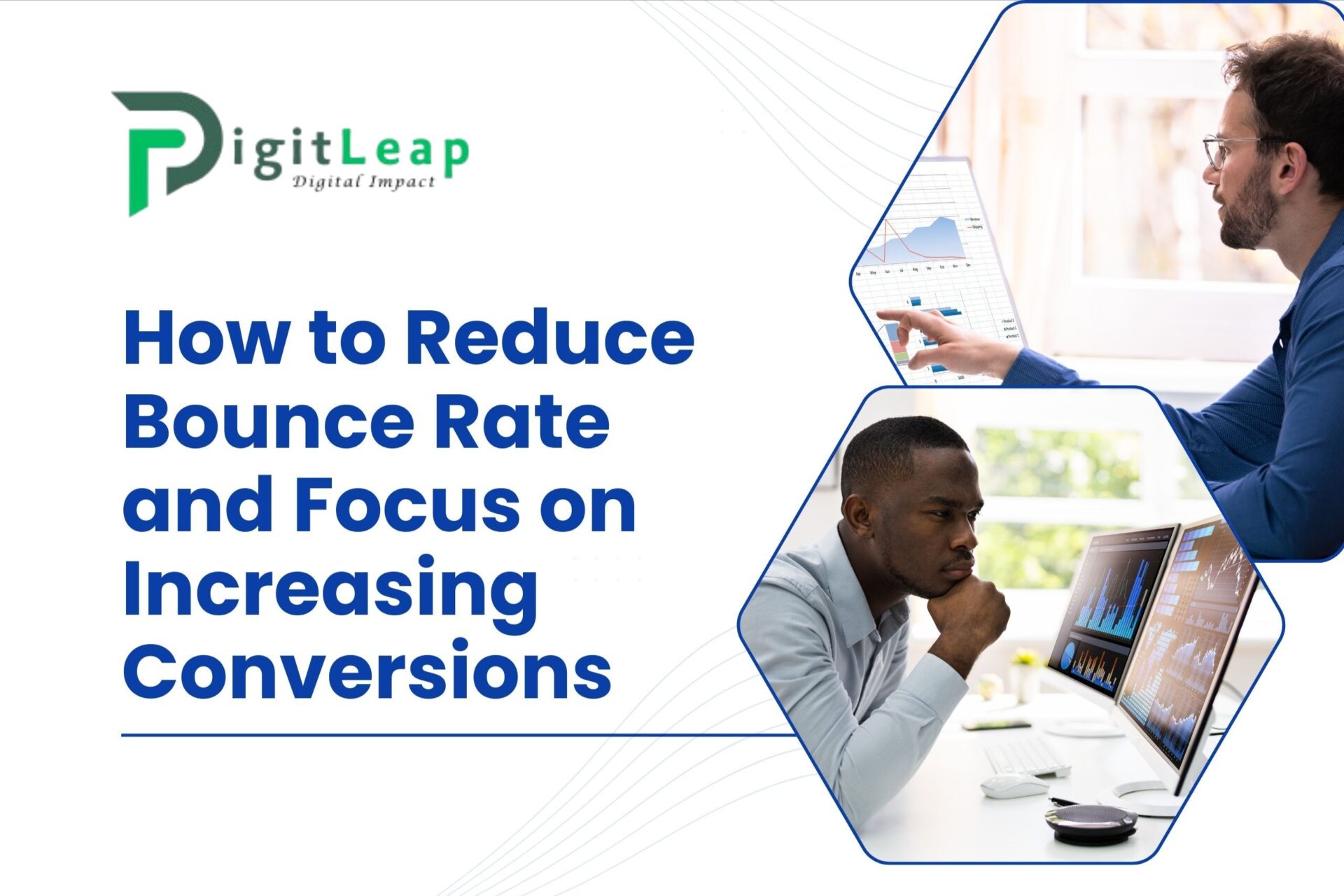How to Reduce Bounce Rate and Focus on Increasing Conversions
Bounce rate can be a major headache for website owners. If visitors land on your page and leave without engaging or exploring further, it means you’re missing out on potential customers or readers. But reducing your bounce rate is only half the battle—what you really want is to increase conversions.
In this simple guide, we’ll look at what bounce rate is, why it matters, and how you can reduce it while focusing on turning visitors into loyal customers or subscribers.
What Is Bounce Rate?
Bounce rate is the percentage of visitors who land on a page and leave without clicking on anything else. In other words, they “bounce” away without interacting with your website.
For example, if 100 people visit your homepage and 60 leave without viewing another page or clicking a link, your bounce rate is 60%. A high bounce rate can be a sign that something isn’t working, like your content, design, or user experience.
Why Bounce Rate Matters
Bounce rate is an important metric because it shows how well your website is engaging visitors. If people are leaving quickly, it can hurt your conversions and overall success.
Here’s why it matters:
- Lost Opportunities: If visitors bounce, you lose the chance to turn them into customers, subscribers, or leads.
- SEO Impact: Search engines like Google notice when users quickly leave a site, which can negatively impact your rankings.
- User Experience: A high bounce rate might suggest that your website isn’t delivering what visitors expect or want.
What Is a Good Bounce Rate?
Bounce rate varies depending on the type of website, but here are some general guidelines:
- 25-40%: Excellent bounce rate—visitors are engaged and exploring your site.
- 40-55%: Average bounce rate—common for most sites.
- 55-70%: Higher than average but could be acceptable for certain content-heavy pages.
- 70%+: Too high—there’s likely a problem that needs fixing.
How to Reduce Bounce Rate
Reducing bounce rate starts with improving the user experience and delivering what visitors are looking for. Here are some effective ways to lower your bounce rate:
1. Speed Up Your Website
Slow loading times are a top reason people leave a website. If your pages take more than a few seconds to load, visitors will lose patience and bounce.
How to Improve Speed:
- Compress images to reduce file size.
- Use a Content Delivery Network (CDN) to speed up global loading times.
- Minimize CSS, JavaScript, and HTML files.
2. Make Your Website Mobile-Friendly
More than half of web traffic comes from mobile devices. If your site isn’t optimized for mobile users, you’ll see a higher bounce rate.
How to Improve Mobile Experience:
- Use a responsive design that adjusts to different screen sizes.
- Simplify navigation for smaller screens.
- Test your site on multiple devices to ensure everything works smoothly.
3. Create Engaging Content
Content is key to keeping users on your site. If your content isn’t interesting, relevant, or helpful, visitors won’t stick around.
How to Improve Content:
- Write clear, engaging headlines that grab attention.
- Break up text with subheadings, images, and bullet points to make it easier to read.
- Focus on delivering value by answering the visitor’s questions or solving their problems.
4. Use Internal Linking
Internal links guide users to other relevant pages on your site, encouraging them to explore more content. This not only reduces bounce rate but also boosts SEO.
How to Use Internal Links:
- Link to related blog posts or articles within your content.
- Use clear anchor text that tells users what to expect when they click the link.
- Highlight key pages like product or service offerings.
5. Improve Navigation
A confusing or cluttered website is a surefire way to make visitors leave. Make sure your site is easy to navigate, with clear menus and a simple structure.
How to Improve Navigation:
- Use a clean, simple menu with clear labels.
- Add a search bar to help users find what they’re looking for.
- Make sure important pages, like your contact or services pages, are easy to find.
6. Avoid Pop-ups and Distractions
Too many pop-ups, ads, or autoplay videos can annoy visitors and cause them to bounce. While some pop-ups (like a signup form) can be useful, use them sparingly.
How to Reduce Distractions:
- Limit the number of pop-ups on a single page.
- Make sure pop-ups are easy to close.
- Use clean page layouts that are easy to navigate and read.
Focusing on Increasing Conversions
Now that we’ve talked about reducing bounce rate, let’s focus on increasing conversions. A conversion happens when a visitor takes a desired action, like signing up for your newsletter, buying a product, or filling out a form.
Here are some strategies to help turn visitors into loyal customers or leads:
1. Use Clear Calls to Action (CTAs)
Your Call to Action (CTA) is what guides visitors toward conversions. A strong CTA tells users what to do next, whether it’s to sign up, buy, or contact you.
How to Improve CTAs:
- Make CTAs clear and specific (e.g., “Download Your Free Guide”).
- Use action-oriented language that encourages users to take the next step.
- Place CTAs where they are easy to find, like at the end of blog posts or in prominent buttons.
2. Build Trust with Social Proof
People are more likely to convert if they trust your business. Social proof like customer reviews, testimonials, or case studies can help build that trust.
How to Use Social Proof:
- Display customer reviews or ratings on product pages.
- Include testimonials from happy clients on your homepage.
- Showcase case studies that demonstrate your success in solving problems for others.
3. Offer Incentives
Sometimes, people need a little extra nudge to convert. Offering incentives like discounts, free trials, or exclusive content can help persuade them to take action.
How to Offer Incentives:
- Use pop-ups or banners to offer a limited-time discount.
- Provide free shipping for first-time buyers.
- Offer free resources like eBooks, guides, or checklists in exchange for email signups.
4. Simplify the Conversion Process
The more complicated the conversion process, the more likely visitors are to abandon it. Keep things simple and remove unnecessary steps.
How to Simplify Conversions:
- Use short forms with only essential fields.
- Offer a guest checkout option for e-commerce sites.
- Remove distractions on checkout or signup pages to keep users focused.
5. Create a Sense of Urgency
People are more likely to take action when they feel a sense of urgency. Using time-sensitive offers or limited availability can encourage conversions.
How to Create Urgency:
- Use phrases like “limited-time offer” or “only X items left”.
- Add a countdown timer for special promotions or sales.
- Highlight upcoming deadlines for signups, webinars, or events.
Monitor and Optimize Regularly
To keep improving your bounce rate and conversions, it’s important to monitor your website’s performance regularly. Use tools like Google Analytics to track bounce rate, conversions, and user behavior. If certain pages have a high bounce rate or low conversion rate, tweak them to see what works best.
Conclusion
Reducing bounce rate and increasing conversions are two sides of the same coin. By improving your website’s speed, mobile experience, content, and navigation, you can keep visitors engaged longer. And by using clear CTAs, social proof, and simple conversion processes, you’ll guide more users toward taking meaningful actions on your site.
The key is to focus on providing a seamless, user-friendly experience that meets your visitors’ needs—and then turning those visitors into loyal customers or subscribers.
FAQs
Q.1 What is bounce rate?
Bounce rate is the percentage of visitors who leave your website after viewing only one page without interacting or clicking on anything else.
Q.2 How can I reduce my bounce rate?
You can reduce bounce rate by speeding up your website, improving mobile optimization, creating engaging content, and simplifying navigation.
Q.3 What is a good bounce rate?
A good bounce rate is typically between 25-40%, though it can vary depending on the type of website you have. Lower bounce rates mean users are engaging more with your content.
Q.4 How do I increase conversions?
To increase conversions, use clear calls to action, provide social proof, offer incentives, and simplify the conversion process.
Q.5 Why is a high bounce rate bad?
A high bounce rate suggests that visitors aren’t engaging with your site, which could lead to lost opportunities, poor user experience, and lower SEO rankings.






